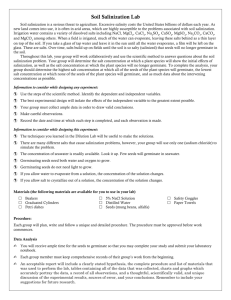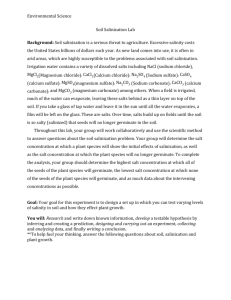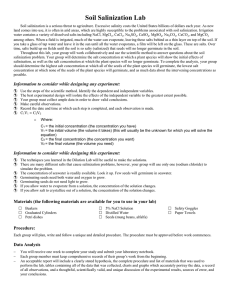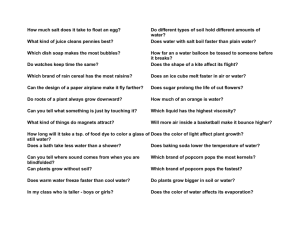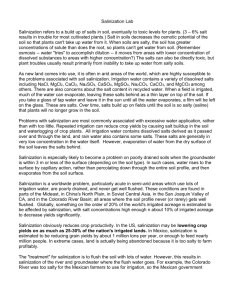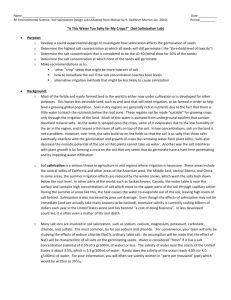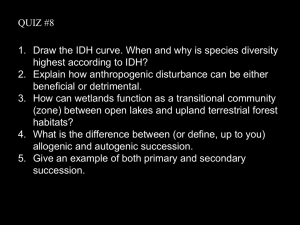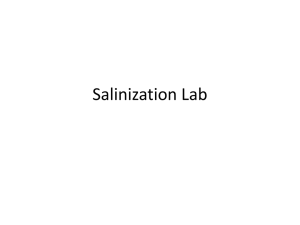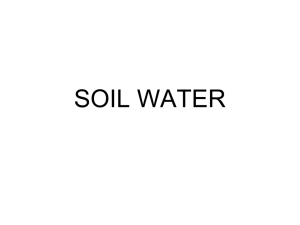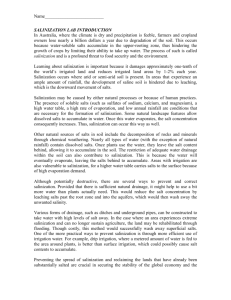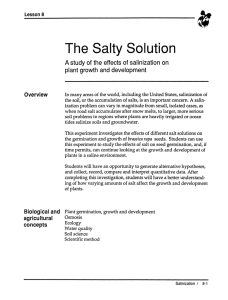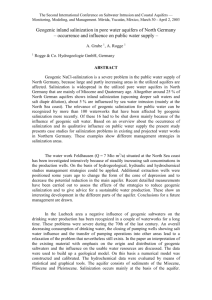Soil salinization is a serious threat to agriculture. Excessive salinity
advertisement
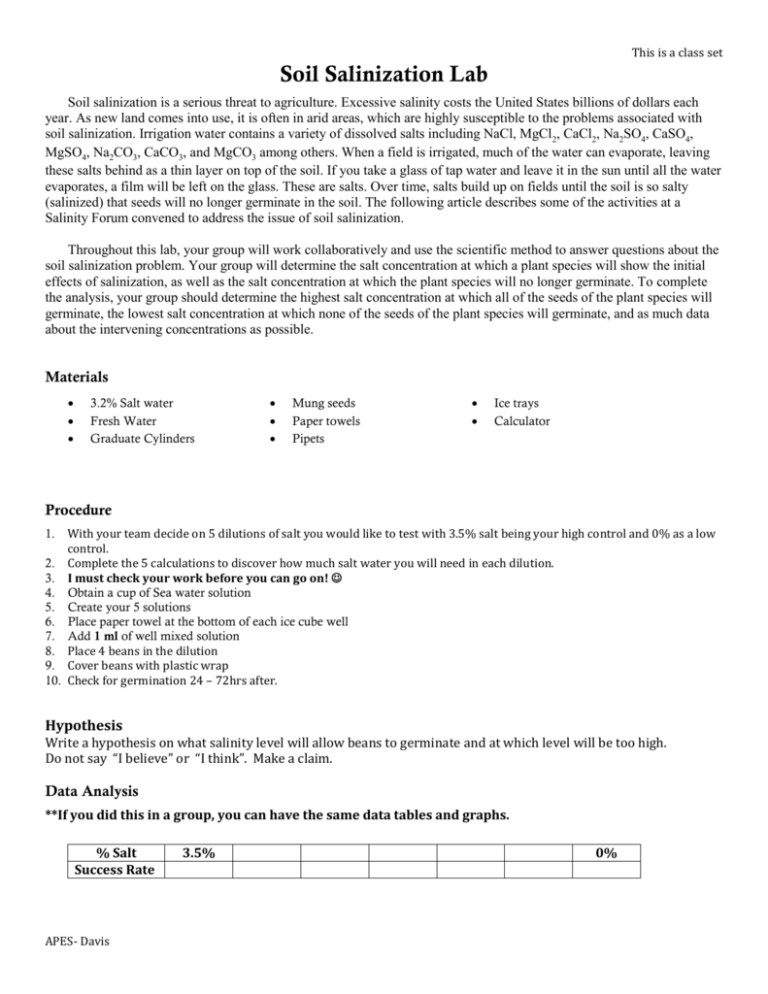
This is a class set Soil Salinization Lab Soil salinization is a serious threat to agriculture. Excessive salinity costs the United States billions of dollars each year. As new land comes into use, it is often in arid areas, which are highly susceptible to the problems associated with soil salinization. Irrigation water contains a variety of dissolved salts including NaCl, MgCl2, CaCl2, Na2SO4, CaSO4, MgSO4, Na2CO3, CaCO3, and MgCO3 among others. When a field is irrigated, much of the water can evaporate, leaving these salts behind as a thin layer on top of the soil. If you take a glass of tap water and leave it in the sun until all the water evaporates, a film will be left on the glass. These are salts. Over time, salts build up on fields until the soil is so salty (salinized) that seeds will no longer germinate in the soil. The following article describes some of the activities at a Salinity Forum convened to address the issue of soil salinization. Throughout this lab, your group will work collaboratively and use the scientific method to answer questions about the soil salinization problem. Your group will determine the salt concentration at which a plant species will show the initial effects of salinization, as well as the salt concentration at which the plant species will no longer germinate. To complete the analysis, your group should determine the highest salt concentration at which all of the seeds of the plant species will germinate, the lowest salt concentration at which none of the seeds of the plant species will germinate, and as much data about the intervening concentrations as possible. Materials 3.2% Salt water Fresh Water Graduate Cylinders Mung seeds Paper towels Pipets Ice trays Calculator Procedure With your team decide on 5 dilutions of salt you would like to test with 3.5% salt being your high control and 0% as a low control. 2. Complete the 5 calculations to discover how much salt water you will need in each dilution. 3. I must check your work before you can go on! 4. Obtain a cup of Sea water solution 5. Create your 5 solutions 6. Place paper towel at the bottom of each ice cube well 7. Add 1 ml of well mixed solution 8. Place 4 beans in the dilution 9. Cover beans with plastic wrap 10. Check for germination 24 – 72hrs after. 1. Hypothesis Write a hypothesis on what salinity level will allow beans to germinate and at which level will be too high. Do not say “I believe” or “I think”. Make a claim. Data Analysis **If you did this in a group, you can have the same data tables and graphs. % Salt Success Rate APES- Davis 3.5% 0% This is a class set Seawater volume equation: C1V1 = C2V2 Where: C1 = the initial concentration (3.5% saltwater) V1 = the initial volume (this will be the unknown for which you will solve the equation) C2 = the final concentration (the concentration your grouped picked in your hypothesis) V2 = the final volume (the volume you need) (10ml) _(Pick with your group)_ % Salt = _(use the equation to find)_ml seawater + _(Subtract from 10 to find)_ml freshwater 1. Neatly show your math calculating for the different volumes of Seawater necessary to create your dilutions. 2. Record the % of seeds germinated 3. Remember what we did for the other labs and do your best to create a graph(s) representing the data collected in this experiment. Don’t forget, -Make graph(s) an appropriate size -Use a straight edge -X –axes (Independent variable, manipulated by experimenter) labeled appropriately -Y –axes (Dependent variable, measured in experiment) labeled appropriately -Title -Units. Discussion ** This part must be your own original idea, do not copy! Explain exactly what happened in the chart and graph(s) that you created. What information does the graph show? Conclusion ** This part must be your own original idea, do not copy! First paragraph: (This can earn you a max of 2 points) What did we learn from doing this experiment? Was your hypothesis correct? If you did this experiment again, what percentages of salt water would you test? Why? Second Paragraph: (This can earn you a max of 2 points) Using information from your notes and data from the lab explain; How does soil salinization occur? Why is it bad? How could GMOs solve the problem with increasing salt in soil? Describe either CAFOs or Industrialized agriculture with a positive and negative. **If you need help with any part of the lab please come to tutoring after school ** APES- Davis
